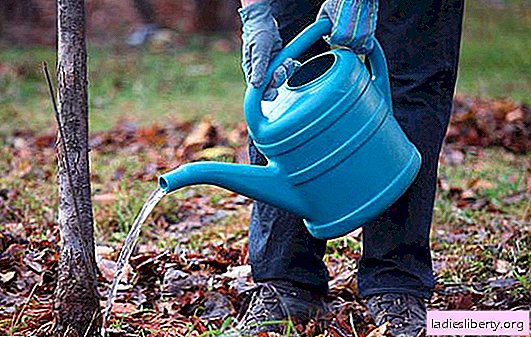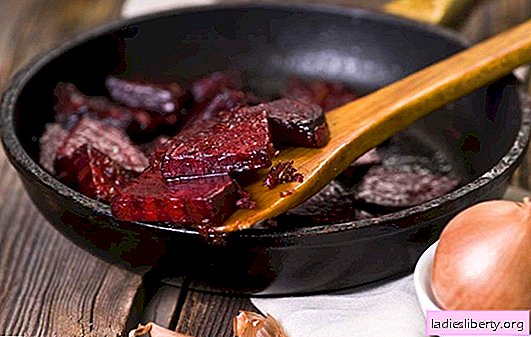
Plum is a stone plant found in every garden.
With proper care, the tree brings a large number of tasty and juicy fruits that can be pickled, make jam, cook stewed fruit and make excellent tinctures.
The tree has a wide variety of varieties that take root well in different climatic conditions.
Plum fruit is a storehouse of useful substances, among which are: calcium, phosphorus, mineral salts, proteins, carbohydrates, chromium, iodine, zinc, copper, as well as a large number of vitamins (A, B1, B2, B6, C, PP, E).

During cultivation, the plum likes space, so that neighboring crowns do not close, so when planting, this point is important to consider. Particular attention should be paid to fertilizers, they must be applied strictly in the amount indicated in the instructions, otherwise the tree can be seriously damaged. It is important to select pollinating varieties, so the tree will not only bloom well, but also bring a bountiful harvest.
Plum dries: why
There are many reasons for drying the plum. Among the main ones, it is worth mentioning improper care throughout the year and climate change. Do not forget about diseases and pests that bring unpleasant consequences to the plant. However, if you treat the tree in time and destroy the pests, then it will continue to grow well and bear fruit abundantly.
Plum dries up: what to do - weather reasons
It is not strange, but stone fruits are very sensitive to watering. If the drinking regime is impaired, this can lead to drying of the plum and poor fruiting. The plant needs high-quality watering, especially during flowering and the formation of the ovary.

Plum does not tolerate severe frosts very well, since on the territory of our country it appeared much later than other fruit trees. The plant has not yet fully managed to adapt to climatic features. Cold affects the condition of the whole plant, which leads to drying. To avoid an unpleasant situation, it is worth choosing frost-resistant varieties. Unfortunately, even choosing the right variety, you can not completely insure the tree from freezing. Such unpleasant consequences can be avoided if the plant is properly looked after during the year. Throughout the year, the drain needs some care:
November - December, it is necessary to thoroughly trample the snow around the tree so that the mice do not penetrate the seedling. It is necessary to shake off the branches of the plant to prevent breakage of the branches;
January, if the winter is practically snowless, then the available amounts of snow must be picked up to the tree trunk and thoroughly trampled. Such actions will protect the roots and trunk from freezing;
February, snow should be removed from the tree trunk and remove the winter harness. The trunk of the plum tree must be whitewashed with a limestone mortar (for 10 liters of water, 3 kg of lime and 2 kg of clay are necessary), such manipulations will help the tree to change temperature changes;
March, in the middle of the month, you need to start pruning the plum;
April, it is necessary to dig a groove to drain melt water, so much moisture will not penetrate the root of the tree. The soil around the trees needs to be dug up, and nitrogen fertilizers scattered around, they will provide excellent growth, development and flowering. To save the plant from possible spring frosts, it is worthwhile to prepare smoke piles in advance that will warm the tree;
May, if the temperature is about +1 ° C, it is necessary to singe smoke heaps. It is better to finish smoke in 1 - 2 hours after sunrise. After which it is desirable to pour the tree with warm water and spray the crown. In hot weather, the plum needs abundant watering (about 6 buckets under 1 tree). Before flowering, the plant needs mineral and organic fertilizers;
June - July, it is necessary to water and feed the plant. Organic fertilizers need to be diluted 1:10 and poured 5 buckets of mortar under the tree. Urea must be diluted in 10 liters of water 1 tablespoon of fertilizer and pour 5 buckets under the tree;
August - September, the tree needs to be fed, so fertilizers nourish the tree with all useful substances, which will prevent freezing and, consequently, drying out. In autumn, the tree must be abundantly watered (about 7 buckets), this will help it to winter;
October, the trunk must be cleaned of various injuries and whitened with lime, just like in February.
Proper care is the key to good wintering and the health of the whole tree. Following such simple rules, you can protect the drain from frost and other weather conditions. So the plum will not dry out, but rather will bring a good harvest.
Plum dries up: what to do - pests and diseases
The yield of plums directly depends on the "health of the tree." Gardeners need to be familiar with plant diseases and take urgent action if necessary.
1. Hole spotting is a fungal disease that affects leaves, flowers, and bark. It is most active in the spring when it rains. Brown spots appear on the plant, surrounded by a darker border. Holes appear on the leaves over time, and the fruits stop growing at the lesion sites and the disease penetrates to the very bone.

To prevent plum disease, it is necessary to prune the tree every year, not allowing it to thicken. In the fall, you need to clean the fallen leaves, and the soil around you need to dig. Affected branches should be cut and burned, and the wounds should be healed. If the disease has not receded, then the tree must be sprayed with Bordeaux liquid (1%) or copper chloroxide (30 g per 10 liters of water). This should be done 2 weeks after flowering.
2. Gummosis - a disease that manifests itself in the form of a brownish thick resin. It is quite common in brush fruit trees. Resin appears in places that have been damaged by frost or received sunburn. Usually, the affected plum branches dry out. The disease appears due to adverse conditions, and it can also develop due to the large amount of nitrogen and moisture in the soil.

The drain must be properly and timely taken care of, and also prevent mechanical damage. The resulting wounds must be immediately cleaned and disinfected (petralatum). If the branches are significantly affected, it is better to cut and destroy them. The affected bark must be cleaned and rubbed with horse sorrel, and then greased with garden var.
3. Rust is a fungal disease that initially affects the leaves. On the outside of the leaf appear red spots that increase in size. A diseased tree weakens, begins to drop leaves prematurely and is subject to freezing, which leads to drying.

Fallen leaves must be destroyed in a timely manner. Before flowering, the tree must be sprayed with copper chloroxide (40 g per 5 l of water, 3 l of solution is needed per tree). Upon completion of the harvest, the plum must be treated with Bordon liquid.
It is worth paying attention to pests that infect the tree and this can lead to drying of the plum.
1. Goldfish - This is a butterfly of white color, its size is about 5 cm. During the swelling of the kidneys, the insect harms the leaves and buds of the tree. By the end of May, the caterpillar pupates and a butterfly appears that lives in the bark, and on the back of the leaves it lays eggs. To destroy the pest, it is necessary to process the plum with karbofos before flowering.

2. Ringed silkworm - This is a night butterfly, about 4 cm in size, its wings have a grayish color. In spring, the insect eats leaves and buds. Control measures: before flowering, the tree must be sprayed with tinctures of wormwood, chamomile or tobacco. If alternative methods do not help, then you need to try chemical agents (entobacterin, dendrobacillin).

Plum dries up: what to do - if the reasons are not established
It may happen that it is not possible to eliminate the causes of drying of the plum.
The gardener could not save the tree from freezing or could not cure the disease and overcome the pest. Put the plum alone.
Perhaps next year a new escape will go from some surviving kidney. If this does not happen, and the plum has dried completely, it is recommended to uproot the tree. You can plant a young seedling in its place only after three years.











